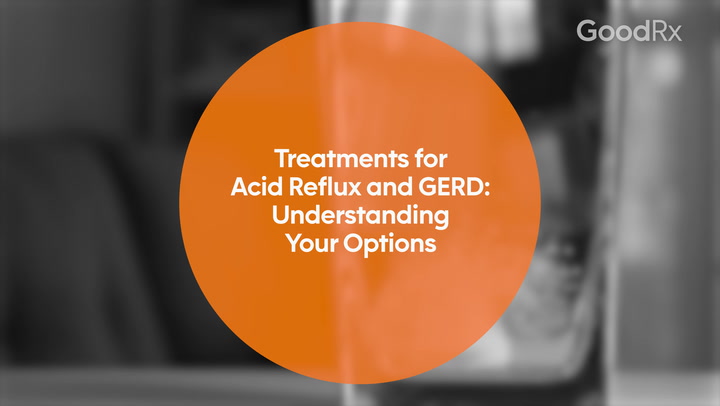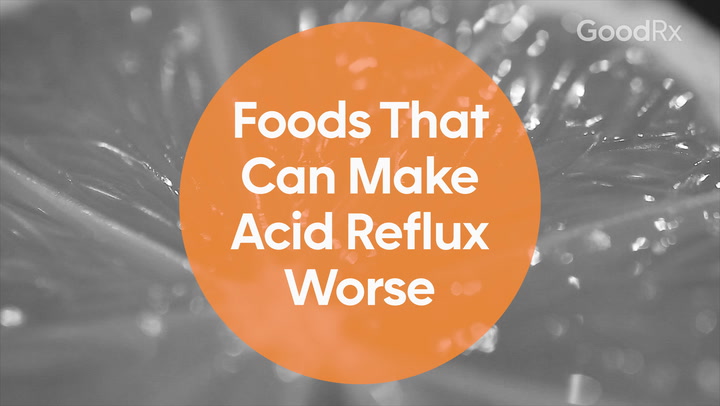
The Best Time to Take Pepcid and 5 Other Pharmacist-Backed Tips
Key takeaways:
Pepcid (famotidine) is a histamine-2 antagonist, or H2 blocker, that’s available over the counter to treat and prevent heartburn. There’s also a prescription-only version that’s used to treat other health conditions, such as peptic ulcers.
To prevent heartburn, the best time to take Pepcid is about 10 to 60 minutes before consuming foods or drinks that trigger symptoms. Though, the timing can differ slightly depending on the dose you’re taking.
Some medications interact with Pepcid. Work with your healthcare professional and pharmacist to identify potential interactions and how to manage them.
Access savings on related medications
Table of contents

If you’ve ever experienced heartburn, you might have looked for Pepcid (famotidine) in the antacid section at the pharmacy. Pepcid is available over the counter (OTC) for preventing and treating occasional acid reflux symptoms. And it’s one of the top 100 most-prescribed prescription medications in the U.S.
Pepcid belongs to a group of medications called histamine-2 antagonists, or H2 blockers. It lowers the amount of acid released into your stomach. This can relieve symptoms from acid reflux and treat ulcers, among other health conditions. But there are specific steps to follow when taking it for best results.
Below, we cover the best time to take Pepcid, plus five other pharmacist-backed tips for taking it.
1. The best time to take Pepcid is about 10 to 60 minutes before consuming trigger foods
If you experience occasional heartburn, Pepcid is available OTC to prevent or treat symptoms. If you’re treating heartburn symptoms, you can take Pepcid at any time for relief. But that’s not the case if you want to prevent heartburn from happening in the first place. In this case, you’ll want to take the medication in time for it to block acid release before it becomes a problem.
The best time to take Pepcid to prevent heartburn symptoms is about 10 to 60 minutes before consuming foods or drinks that give you heartburn. The specific timing recommendations vary slightly depending on the Pepcid dose you’re taking:
Pepcid 10 mg: Take 1 tablet by mouth 15-60 minutes before eating foods or drinking liquids that cause heartburn.
Pepcid 20 mg: Take 1 tablet by mouth 10-60 minutes before eating foods or drinking liquids that cause heartburn.
If you’ve been prescribed Pepcid, follow the directions provided to you by your healthcare professional. They may suggest taking Pepcid in a way that differs from what’s described above. If you’re not sure when you should take your medication, ask your prescriber or pharmacist.
2. Take Pepcid with a full glass of water, with or without food
If you’re taking Pepcid tablets, make sure to have a full glass of water handy when you take your doses. Taking the tablets without a glass of water can cause them to get stuck in your esophagus, the pipe that connects your mouth to your stomach. This could lead to irritation or delay the medication’s effects.
Taking your doses with water will ensure the medication gets into your stomach quickly. It can then get absorbed and start working to prevent acid from getting released into your stomach.
Pepcid side effects: Do you get headaches after taking Pepcid (famotidine)? Here’s a list of potential Pepcid side effects and how to manage them.
Considering your options: If you experience acid reflux, there are many medications that can help you get relief. Here, pharmacists review options like antacids, Pepcid, and more.
Probiotics for acid reflux: Learn more about the best probiotics for heartburn symptoms, plus what you should know about other popular reflux supplements.
Food doesn’t really affect how well Pepcid is absorbed into the body. So you can take Pepcid with or without food. However, you should avoid eating foods that cause you to have heartburn symptoms until at least 15 minutes after taking a dose of Pepcid.
3. Don’t take more than 2 Pepcid tablets within 24 hours
Pepcid’s effects last for about 10 to 12 hours. For OTC Pepcid, it’s recommended to take no more than 2 tablets per day. (Though, your healthcare professional may recommend taking Pepcid differently.) Taking more than 2 tablets in a 24-hour period could lead to side effects.
If you aren’t getting enough heartburn relief with 2 doses of Pepcid a day, speak to your healthcare professional. They can help you figure out what’s causing your symptoms and how best to treat them.
4. Make sure you swallow Pepcid tablets whole and don’t chew them
Unlike antacids such as calcium carbonate (Tums), most Pepcid tablets aren’t chewable. You’ll need to swallow the tablets whole, or your body may not absorb the medication properly. One exception is a combination product called Pepcid Complete, which comes as chewable tablets. But this product is specifically meant to treat heartburn symptoms and contains antacid ingredients.
If you’re having trouble swallowing Pepcid tablets, talk to your pharmacist or healthcare professional. They can walk you through your options, including trying tips for swallowing the tablets. If you’re taking prescription famotidine, you may be able to switch to a liquid version. But once mixed by your pharmacist, the liquid is only good for 30 days.
5. Contact your healthcare professional if you need to take Pepcid for more than 14 days or your symptoms worsen
Pepcid is only meant to be taken short term if you’re self-treating heartburn symptoms. If you’re still experiencing symptoms after 14 days, stop taking Pepcid and contact your healthcare professional for further guidance. You should also talk to them if your heartburn isn’t getting better with Pepcid — or if it gets worse. You may need a different treatment to help manage your symptoms.
6. You may need to time other medications you take around your Pepcid dose
Acid reducers like Pepcid can interact with certain medications. One reason is that some medications need an acidic environment to get broken down and absorbed in the stomach. Because Pepcid lowers the amount of acid released into the stomach, it can cause these medications to be less effective.
For this reason, it isn’t recommended to take the following medications with Pepcid:
Risedronate (Actonel, Atelvia)
Cefuroxime
Sprycel (dasatinib)
Fosamprenavir
Pepcid can also block proteins in the liver that help break some medications down. This can cause the medications to build up in the body, increasing the risk for side effects. For example, Pepcid can raise levels of tizanidine (Zanaflex) in the body. It’s recommended to avoid taking tizanidine at the same time as Pepcid.
Additional medications may interact with Pepcid. So before taking it, share a list of your current medications with your healthcare professional and pharmacist. They can help you screen for potential interactions and determine how to manage them.
The bottom line
Pepcid (famotidine) is available over the counter (OTC) to prevent and treat heartburn. There’s also a prescription version that’s used to treat other health conditions, such as peptic ulcers.
The best time to take 20 mg Pepcid tablets to prevent heartburn is 10 to 60 minutes before eating foods or drinking liquids that trigger symptoms, while the 10 mg tablets should be taken 15 to 60 minutes before. But make sure to follow the directions on your OTC product or the instructions from your prescriber carefully.
Pepcid can interact with certain medications. So check with your healthcare professional and pharmacist about possible interactions before taking Pepcid. And let them know if you have trouble swallowing the tablets, or if you need to take Pepcid for more than 14 days for your symptoms.
Why trust our experts?



References
Alagga, A. A., et. al. (2024). Drug absorption. StatPearls.
Bausch Health US. (2024). Pepcid - famotidine tablet, film coated [package insert]. DailyMed.
Camber Consumer Care. (2022). Famotidine - famotidine tablet, film coated [package insert]. DailyMed.
Camber Pharmaceuticals. (2023). Famotidine - famotidine powder, for suspension [package insert]. DailyMed.
ClinCalc. (n.d.). The top 200 drugs of 2022.
Fuchs, J. (2009). The amount of liquid patients use to take tablets or capsules. Pharmacy Practice.
Kenvue Brands. (2024). Pepcid Complete - famotidine, calcium carbonate, and magnesium hydroxide tablet, chewable [package insert]. DailyMed.
Nguyen, K., et. al. (2024). Famotidine. StatPearls.
Was this page helpful?
Related Articles
Browse medications
View AllResearch prescriptions and over-the-counter medications from A to Z, compare drug prices, and start saving.



















